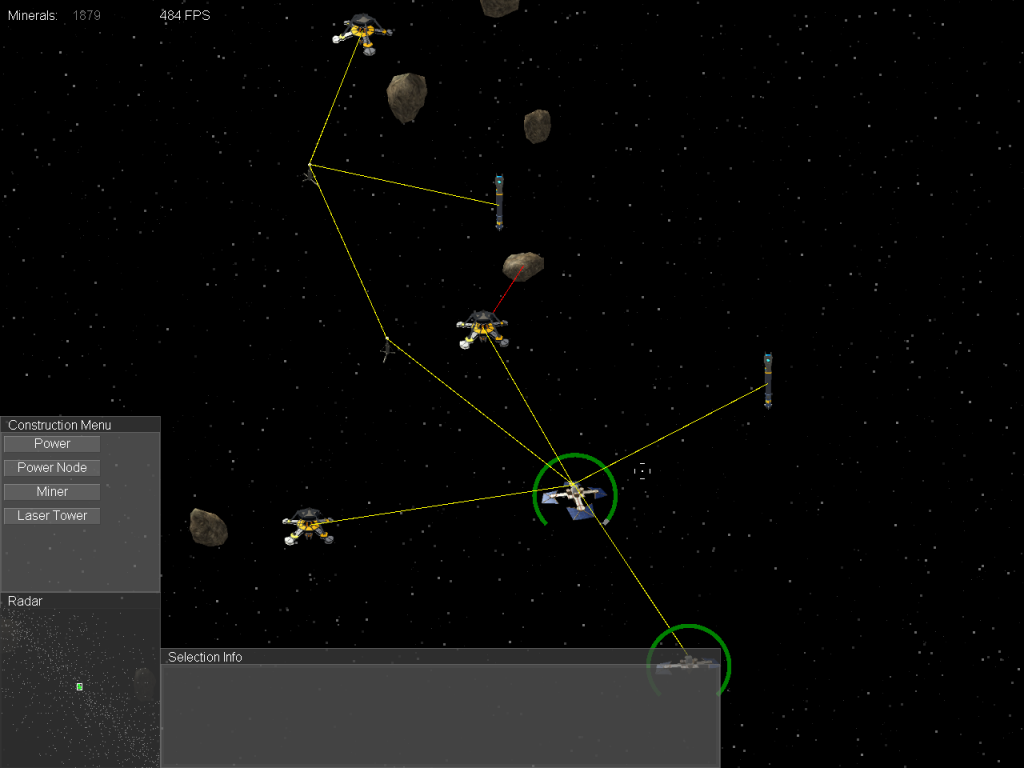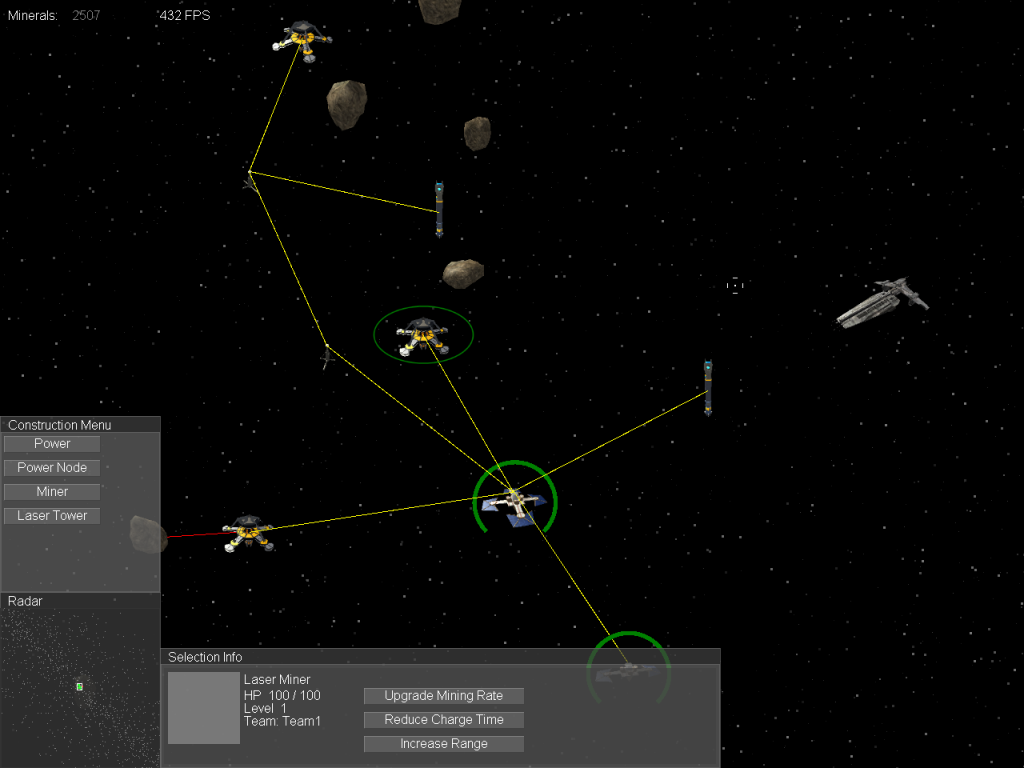I was playing an early alpha of a friend’s strategy game and noticed that the animation of the character’s feet wasn’t in sync with the ground below it. This got me thinking that I could add a feature into my sprite maker where you could preview what your character would look like at various animation speeds in relation to ground speeds so that you could more easily sync the two up. I still need to add the registration points to the editor too, my lasers are going to need those really soon.
Somewhere down the line, I would like little rotating turrets on my spaceships and battle-stars. With my current isometric point of view and 2D sprites, this could prove challenging. Just thinking out loud: I would need to use an orthographic projection of my models (but maybe not), then draw the sprites in a few parts to handle special cases like where a turret is partially obstructed by a tall part of the structure it’s attached to. If I handle cases where a turret can be obstructed by the structure it’s attached to, I’d want to handle that (somehow) in the sprite maker because the purpose of the sprite maker is to abstract these sorts of details from the programmer and let the artist handle all of this artsy stuff.
Not that I used to get a lot of search referrals, but I have not had a single search referral since I upgraded my website. I’m pretty sure I broke something. That ought to teach me to upgrade my website. Anyone had this problem, or know how to fix it? All of the old URLs no longer work, and you’ll get a friendly 404 if you try. I’m certain that has something to do with it.
Life has been keeping me rather busy recently, so I haven’t had time to develop AO any further :(. I’m hoping to get a few hours in this week though, see if I can make a quick video of the power pulsing and finish up with the network cleanup. The networking has a few complexities that need some thought, like: Will updating a ship’s location, velocity, and target, only when the target changes be sufficient enough to make a smooth client-side simulation? or will more updates be required? My instinct tells me that this should work just fine, as long as the game knows when this target change occurred and how to bring the ship into the present (keeping in mind that all network packets come from the past). There are some other organizational issues around how to send the initial state of the game to the client and how scenarios tie in to all of this, but I’ll elaborate on that in an other post.

